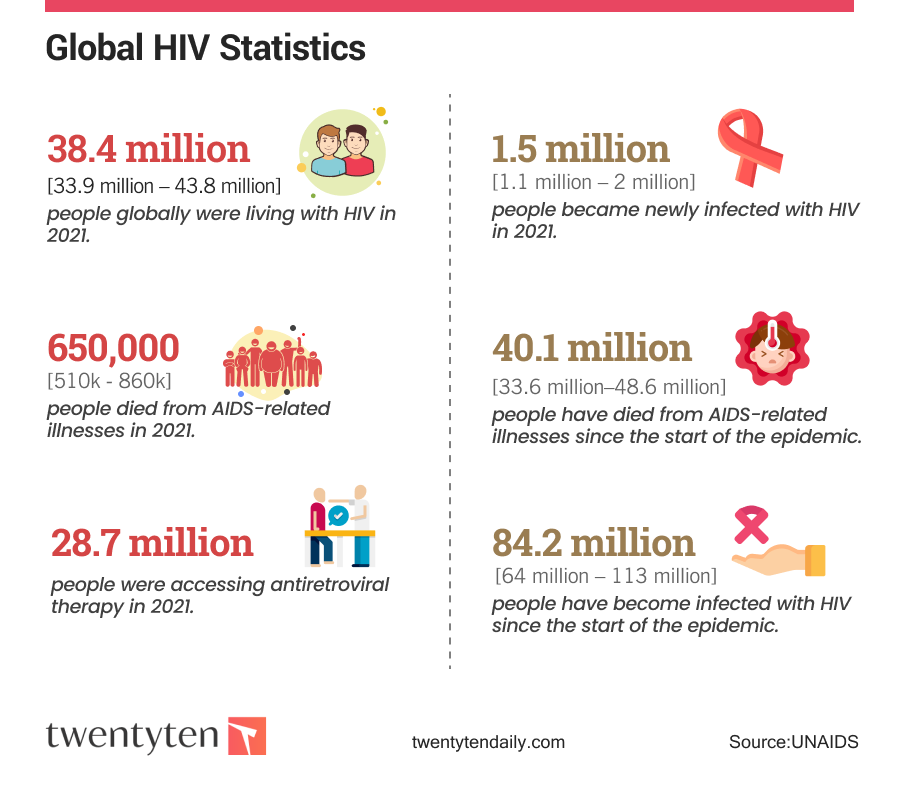Did you know that every week about 4,900 young women aged between 15 and 24 become infected with HIV? While in 2021, UNAIDS shared that some 1.5 million people became newly infected with HIV, bringing the total number of people living with HIV to 38.4 million.
Acquired immune deficiency syndrome (AIDS) is a chronic and potentially life-threatening condition caused by the human immunodeficiency virus (HIV) that currently has no cure or vaccination for nearly over 100 years since it was first detected.
Each year on December 1, the world commemorates World AIDS Day, an opportunity to share new developments and global statistical data on the disease.
While there is no cure for the epidemic, there are many effective HIV prevention, treatment and care options that can enhance the quality of life.
Global Data On HIV/AIDS
On a global scale, HIV/AIDS has killed up to 40.1 million people and infected 84.2 million over the past 40 years, while some 650,000 people died from AIDS-related illnesses in 2021, down 68 percent from its peak of two million deaths in 2004.
Since 2010, new HIV infections have declined by 32 percent, from 2.2 million to 1.5 million in 2021.

Among children, new HIV infections have dropped by 52 percent, from 320,000 in 2010 to 160,000 in 2021. While about 5.9 million people worldwide were unaware of their HIV status in 2021.
Also, a report by the UNAIDS shared that women have been seen to have a higher infection rate than men, especially women between the ages of 15 – 49 years. The disease is reported to be the fourth-leading cause of death among younger women (aged 15 to 29 years).
In sub-Saharan Africa, six in seven new HIV infections among adolescents aged 15–19 years are among girls. Girls and young women aged 15–24 years are twice as likely to be living with HIV than young men.
Prevention and Treatment Options
UNAIDS has recommended a range of tools and treatments to tackle HIV.
Sex Education
Sex education is vital for young people to understand how to keep themselves safe from sexually transmitted diseases (like HIV) and avoid unplanned pregnancies.
Access to antiretroviral therapy
In 2021, at least 28.7 million people received access to antiretroviral therapy (ART) – a treatment that reduces the amount of HIV in the blood.
Pre-exposure prophylaxis (PREP)
Pre-exposure prophylaxis (PrEP) entails taking antiretroviral medication before possible exposure to HIV. UNAIDS says this has been effective across all populations.

